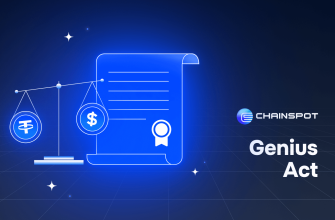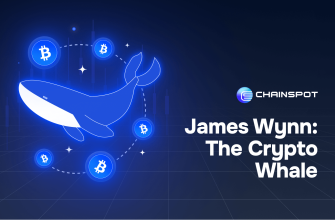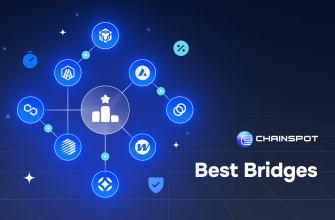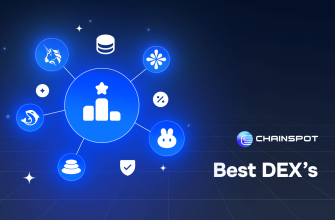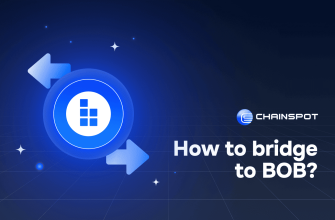- What is Tokenomics?
- Key Components of Tokenomics
- 1. Token Supply: Total, Circulating, and Max Supply
- 2. Distribution Model: Initial and Ongoing Token Allocation
- 3. Token Utility: How Tokens Are Used
- 4. Incentive Structures: Rewards and Staking
- Analyzing Tokenomics for Investment Decisions
- Supply and Demand Dynamics
- Distribution Transparency and Fairness
- Token Utility and Ecosystem Integration
- Incentive Structures and Community Engagement
- Why Tokenomics Matters in Crypto Investments
- Chainspot: Your Tool for Tokenomics Analysis and More
- Conclusion
In the dynamic world of cryptocurrency, understanding tokenomics is crucial for investors looking to make informed decisions. Tokenomics—a blend of “token” and “economics”—refers to the economic model behind a crypto project, influencing how a token is distributed, used, and valued. It encompasses various factors, including supply, demand, distribution mechanisms, and utility, all of which play a critical role in a token’s potential success. This guide provides an overview of crypto tokenomics and how it impacts investment strategies.
What is Tokenomics?
At its core, tokenomics is the study of the economic principles governing cryptocurrencies. It helps answer questions like:
- How many tokens are in circulation?
- What is the maximum supply?
- How are new tokens generated?
- What purpose does the token serve?
Tokenomics is essential because it affects a token’s price stability, liquidity, and long-term viability. It shapes how a project will grow, how its community will develop, and how incentives are aligned between developers, investors, and users.
Key Components of Tokenomics
To properly evaluate a cryptocurrency, it’s essential to consider the main components of its tokenomics. These include:
1. Token Supply: Total, Circulating, and Max Supply
The supply of a token is a fundamental factor in determining its value. There are three key metrics to consider:
- Total Supply: The number of tokens that exist, including those that are locked, staked, or otherwise unavailable.
- Circulating Supply: The number of tokens currently available on the market for trading.
- Max Supply: The upper limit of how many tokens will ever be created.
Why it matters: A limited supply can drive scarcity, potentially increasing a token’s value if demand rises. Conversely, an unlimited supply may result in inflation, reducing the token’s value over time.
2. Distribution Model: Initial and Ongoing Token Allocation
The way tokens are distributed initially and over time affects their scarcity and how they reach users. Token distribution models include:
- Pre-mining or ICOs (Initial Coin Offerings): Tokens are distributed to early investors or stakeholders before the token goes public.
- Mining and Staking Rewards: Tokens are gradually introduced into circulation as rewards for miners or validators who maintain the network.
Why it matters: Fair and transparent distribution can encourage community trust and engagement, while uneven or opaque distribution may lead to centralization and volatility.
3. Token Utility: How Tokens Are Used
Utility is one of the most important aspects of tokenomics, as it defines the token’s role within its ecosystem. A token can have various uses, such as:
- Governance: Token holders can vote on project decisions.
- Payments: Used as a medium of exchange within a platform.
- Access: Required to access certain features or services.
Why it matters: Tokens with real utility are likely to see sustained demand, as they offer tangible value to users within the ecosystem.
4. Incentive Structures: Rewards and Staking
Incentive structures play a significant role in how a project engages its community and sustains growth. Common mechanisms include:
- Staking Rewards: Encourages holders to lock their tokens, reducing the circulating supply and supporting network security.
- Liquidity Mining: Provides incentives for users to supply liquidity to decentralized exchanges.
Why it matters: Well-designed incentive structures can enhance network participation, stabilize token prices, and align interests across stakeholders.
Analyzing Tokenomics for Investment Decisions
Tokenomics analysis is essential for evaluating the potential success of a cryptocurrency. Here are key areas to consider:
Supply and Demand Dynamics
Analyze the balance between token supply and demand:
- How is the token supply managed?
- Are there mechanisms to control inflation?
- What factors drive demand for the token?
Projects with a capped supply and rising demand are more likely to see appreciation in token value. Tokens that face issues with oversupply or lack sufficient demand drivers may struggle to maintain their value.
Distribution Transparency and Fairness
A healthy distribution model is transparent, decentralized, and designed to prevent manipulation:
- How are tokens distributed among team members, investors, and the community?
- Is there a significant portion allocated to the founding team? How are these tokens vested?
Assessing these factors can help identify potential risks of centralization or dumping by large holders.
Token Utility and Ecosystem Integration
A token with diverse uses within its ecosystem is more likely to sustain long-term interest:
- Does the token have clear utility?
- How integrated is the token into the project’s ecosystem?
Tokens with multiple use cases are generally more resilient to market fluctuations and can attract a broader user base.
Incentive Structures and Community Engagement
Strong incentive mechanisms are crucial for maintaining a healthy network and ensuring active participation:
- What incentives are in place for staking, liquidity provision, or network governance?
- How does the project encourage community engagement?
Projects that effectively incentivize their community are more likely to achieve network effects, driving growth and adoption.
Why Tokenomics Matters in Crypto Investments
Understanding tokenomics is crucial for anyone looking to invest in cryptocurrencies. By analyzing token supply, distribution models, utility, and incentive structures, investors can gauge the potential success and stability of a project. Effective tokenomics align the interests of developers, investors, and users, creating a robust ecosystem that can sustain growth over time.
💡 Tip for Investors: Always research a project’s tokenomics thoroughly before investing. Look beyond the hype and focus on how the tokenomics are designed to support long-term growth and value creation.
Chainspot: Your Tool for Tokenomics Analysis and More
At Chainspot, we make it easy to manage your crypto investments across multiple blockchains. Our platform provides access to:
- Cross-chain swaps and bridges to maximize your liquidity across networks.
- Loyalty programs with cashback for every transaction.
- An all-in-one interface for managing assets, analyzing tokenomics, and participating in DeFi opportunities.
Ready to dive into tokenomics and make smarter crypto investments?
👉 Start using Chainspot today
Conclusion
Tokenomics is an essential aspect of cryptocurrency that can significantly influence the success of a project. By understanding and analyzing a token’s economic model, investors can make more informed decisions and identify promising opportunities in the crypto space. Whether you’re looking to invest in a new token or explore DeFi opportunities, a solid grasp of tokenomics is crucial.
Stay informed, invest wisely, and make sure you leverage platforms like Chainspot to optimize your crypto strategy!







